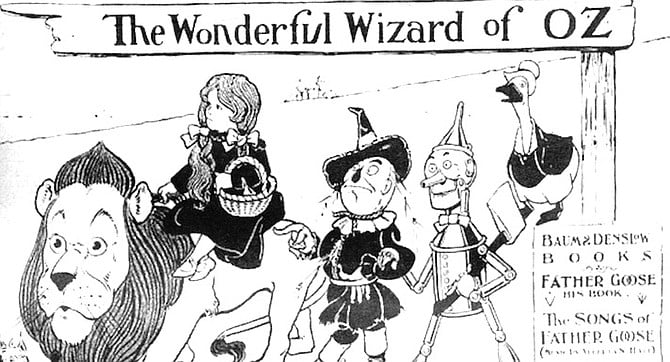
As Baum developed the series, the Emerald City took on the physical attributes of Coronado and the social milieu of hotel living.
From 1998 to 2004, Schinto wrote feature stories for the Reader.
Editor's picks of Schinto's stories:
- Someone paid $5313 for an Abigail Adams thank-you note. Another bidder spent $7500 for a love letter by Benedict Arnold. A third plunked down $25,000 for a letter by John Hancock discussing, among other things, employment for his brother. The final bid for a letter by Declaration of Independence signer Joseph Hewes of North Carolina was $53,125. The price for an example of writing by another North Carolinian signer, William Hooper, was $206,500. (April 28, 2010)
- How dirty did Kate Sessions get her own hands? Who did the physical labor of the plantings? “Oh, she did!” says Holden. At least she did some of it. “Descriptions of her say her clothes were rarely pressed and always dusty.. She was a straight shooter, unimpressed with titles. She treated everyone the same.” Holden also describes Sessions as a woman of strong opinions. “She had a driver drive her around, so she could peruse people’s yards." (Aug. 5, 2004)

"My parents were smart. They made sure to buy me lots of Legos and Erector sets."
- “Yeah, hire a thief to catch a thief,” Gula conceded. “One of the main things Security Wizards does is reverse engineering of the hacker technique.” Beyond that, however, he hesitated to differentiate between good and bad hackers. “I personally don’t like to classify people. Traditionally ‘white-hat hackers’ are the good kind, and ‘black-hat hackers’ are bad.” Lately, however, he said he had been hearing the term “gray-hat hacker.” (June 19, 2003)
- “Chicago winters were pretty hard on him, and he wasn’t in great health. In 1903, he and his wife went to Florida and didn’t like it. In 1904, they toured California, and Coronado was their favorite place.” It became Baum’s favorite place to work too, said Hearn. “He wrote a number of books there. You can see from the introductions; he signed them ‘Coronado,’ beginning with The Land of Oz through The Road to Oz.” (May 15, 2003)

North Island. It’s believed that Nawaf Alhazmi and Khalid al Midhar who helped crash American Airlines Flight 77 into the Pentagon were part of an alternative plan, to attack the nuclear-powered Stennis.
- “More disconcerting is that I got a number of calls from people — and this is a Navy community, with a lot of Navy retired, like myself — who said, ‘Hey, I agree with you, but I’m not going to say a word.’ And, as I interpret it, they’re saying, ‘I enjoy my life here in Coronado. I don’t want to rock any boats. I want to be able to walk into the clubs, go to the store, play golf, and all of that, and not have people mad at me.’ (April 10, 2003)
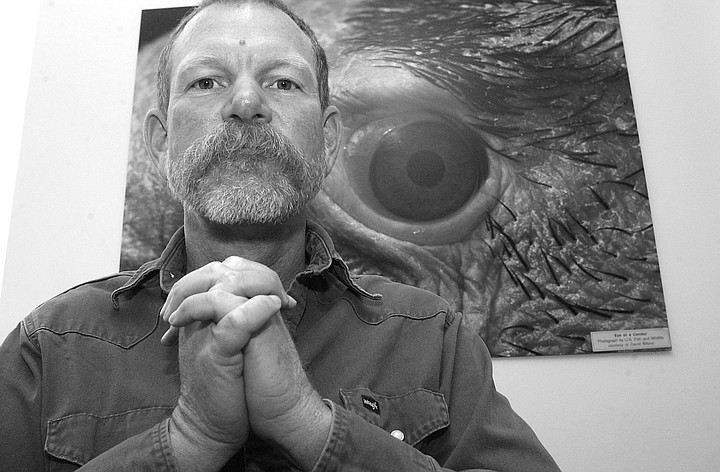
Philip Unitt: “A group of us talked about doing an atlas in 1978. But as time went on, the other people fell by the wayside until I was the only one left."
Photo by Sandy Huffaker, Jr.
- “Five days out of the last seven I’ve been on ten-mile hikes. I’ve been birding in really remote parts of the county. What people for this project do is adopt a square. They’re responsible for reporting on the birding activity there. Many squares in the remotest spots weren’t adopted by anybody. So now we have what we call blockbusters, where a group of us do the square. Last weekend I helped do a square that we had to hike two and a half miles just to reach." (July 11, 2002)
- “I took Shelter Island to be Ground Zero,” he says. “Now I’m moving out in concentric circles.” In addition to the still-intact Bali Ha’i and remnants of bygone tiki-inspired restaurants and hotels on the peninsula, Bevil considers Trader Mort’s Liquor & Deli, at the entrance to the causeway on Shelter Island Drive, to be “one of the most perfect tiki commercial buildings” he’s ever seen. Its name is taken from one of the craze’s originators, Victor Bergeron, a.k.a. Trader Vic. (July 5, 2001)
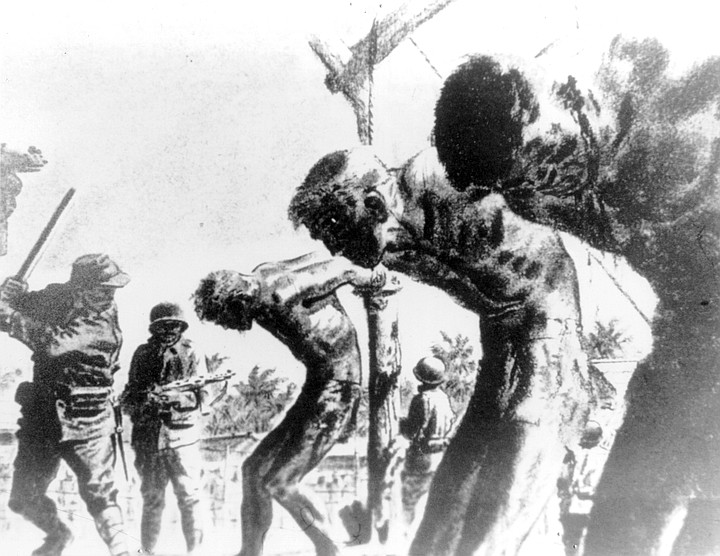
Cabanatuan. “I hung on the stretching rack for a day and a half, and when they let me down, they tore my clothes off and tied a piece of wet bamboo splice, like a string, around my testicles. Then they hanged me again."
- I had been reading other books besides Tenney’s, because I’d had only a vague notion of what the Bataan Death March was. I hadn’t known much about the mass surrender in the Philippines, which had caused it. And I’d had little idea of what had happened to the men who had become Japan’s prisoners, except that, sometime in the past, I’d seen the 1957 movie Bridge on the River Kwai and knew its whistled theme song. (March 13, 2003)
- “See, the camera is the only medium that allows you literally to look through someone else’s eyes,” Ollman says. “What you see here is what Genthe saw in his studio. It’s not an approximation. It’s not three inches to the side. It’s exact. It’s called The Madonna and was said to have turned Garbo’s career around. Until then, she was getting bit parts as a sort of tall Scandinavian with an accent. (May 3, 2001)
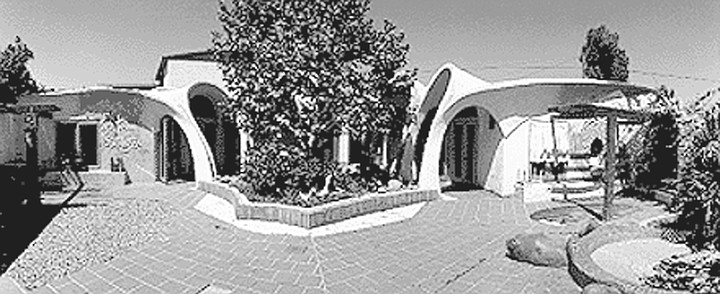
Colonia Esperanza, Tijuana. "San Diego is really a Pacific Rim city, as Tijuana is. They really should be the host cities to the Pacific."
- “San Diego doesn’t have the faith in itself that a place like New York or San Francisco has,” he said. “It’s partly the result of history. San Diego turned in on itself when the railroad went to Los Angeles instead of here and we became a cul-de-sac. The attitude makes doing good things here very difficult, because nobody thinks those things are all that important.” (April 26, 2001)
- San Diegan John J. Montgomery isn’t famous because he was secretive about being the first to fly. In those days, if you were thinking about flying anything, you were considered a little crazy.” He kept it to himself for fear of ridicule, Fogel speculates. For that reason no photographs document his claim. “The only witness was his brother. But as I explain in the book it seems that all the conditions (for success] were favorable.” (Nov. 22, 2000)
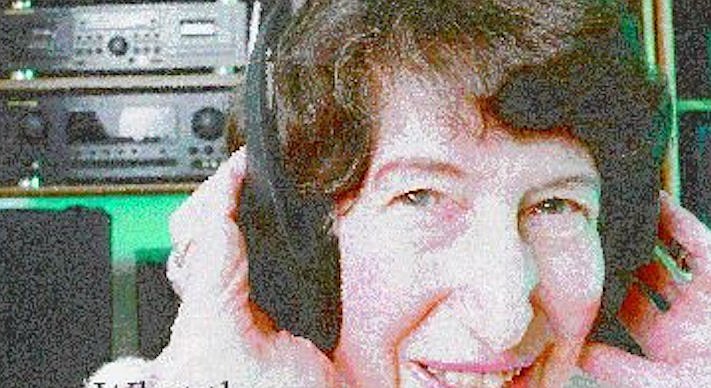
When I mention the term “audiophiles” Chicky smiles tolerantly and says, “They’re very nice people, but they’re very hard to deal with."
- I’m grateful that five San Diegans agreed to invite me into their “listening rooms” and to “demo” their equipment. Even so, three of them requested pseudonyms, citing security reasons. But I also suspect they were a little leery of what I might write about them. Many audiophiles are only too aware of the ease with which some latter-day Flanders or Swann could ridicule them and the lengths to which they go to avoid hum, rumble, hiss, and other destroyers of the audio illusion. (April 27, 2000)
 Facebook
Facebook
 X
X
 Instagram
Instagram
 TikTok
TikTok
 Youtube
Youtube














